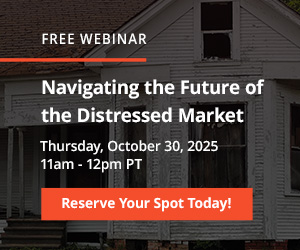According to ATTOM’s Q2 2025 U.S. Home Affordability Report, 99 percent of counties with enough data to analyze saw median-priced single-family homes and condos become less affordable in Q2 2025 compared to historical averages. This marks the 14th straight quarter where owning and maintaining a median-priced home has consumed a greater share of the average U.S. wage than what’s been typical historically.
The report also indicates that major expenses tied to a median-priced home in the U.S. would have taken up 33.7 percent of the average annual wage—an increase from 32 percent in Q1 and significantly above the 28 percent threshold commonly recommended by lenders.
ATTOM’s latest home affordability analysis underscores the growing strain on both current homeowners and prospective buyers as home prices climb. Following a brief decline from $355,000 in Q4 2024 to $350,275 in Q1 2025, the U.S. median home price rose to $369,000 in Q2. At the same time, the average 30-year fixed mortgage rate held steady at 6.82 percent.
The report stated that in the second quarter of 2025, owning a median-priced home was less affordable than historical norms in 99.3 percent (575) of the 579 counties analyzed—an increase from 96.9 percent in the previous quarter.
The latest home affordability report measures affordability for average wage earners by estimating the income needed to cover major monthly homeownership costs—including mortgage payments, property taxes, and insurance—on a median-priced single-family home. The calculation assumes a 20 percent down payment and follows the standard 28 percent “front-end” debt-to-income ratio. This required income is then compared to annualized average weekly wage data from the U.S. Bureau of Labor Statistics.
The affordability report found that in 77.9 percent (451) of the 579 counties analyzed, homeownership costs in Q2 2025 exceeded 28 percent of the typical resident’s income—surpassing the standard affordability threshold. This included major population centers like Los Angeles County, CA; Cook County, IL (Chicago); Maricopa County, AZ (Phoenix); San Diego County, CA; and Orange County, CA.
In this post, we take a more granular look at the data behind ATTOM’s latest U.S. Home Affordability Report to reveal the top 10 U.S. counties with the largest yearly increase in Affordability Indexes in second-quarter 2025. Among those counties with a population of at least 100,000 and at least 50 single-family home and condo sales in the second quarter of 2025, those with the largest increase in affordability indexes (under 100 is less affordable than historic average) are enumerated. Additionally, we provide a comparison with Q2 2025 and Q2 2024 Indexes.
#10 – Fayette County, Pennsylvania
- YOY Percentage Change in Index: 17%
- Q2 2025 Affordability Index: 88
- Q2 2024 Affordability Index: 75
#9 – Sarasota County, Florida
- YOY Percentage Change in Index: 18%
- Q2 2025 Affordability Index: 77
- Q2 2024 Affordability Index: 65
#8 – Richmond County, Georgia
- YOY Percentage Change in Index: 18%
- Q2 2025 Affordability Index: 75
- Q2 2024 Affordability Index: 63
#7 – Lake County, Ohio
- YOY Percentage Change in Index: 19%
- Q2 2025 Affordability Index: 79
- Q2 2024 Affordability Index: 66
#6 – Jefferson County, New York
- YOY Percentage Change in Index: 20%
- Q2 2025 Affordability Index: 95
- Q2 2024 Affordability Index: 80
#5 – Northampton County, Pennsylvania
- YOY Percentage Change in Index: 23%
- Q2 2025 Affordability Index: 88
- Q2 2024 Affordability Index: 71
#4 – Erie County, New York
- YOY Percentage Change in Index: 24%
- Q2 2025 Affordability Index: 90
- Q2 2024 Affordability Index: 73
#3 – Mobile County, Alabama
- YOY Percentage Change in Index: 28%
- Q2 2025 Affordability Index: 97
- Q2 2024 Affordability Index: 76
#2 – Fairfield County, Ohio
- YOY Percentage Change in Index: 34%
- Q2 2025 Affordability Index: 75
- Q2 2024 Affordability Index: 56
#1 – Saint Lawrence County, New York
- YOY Percentage Change in Index: 50%
- Q2 2025 Affordability Index: 132
- Q2 2024 Affordability Index: 88
Want to learn more about home affordability trends in your area? Contact us to find out how!

